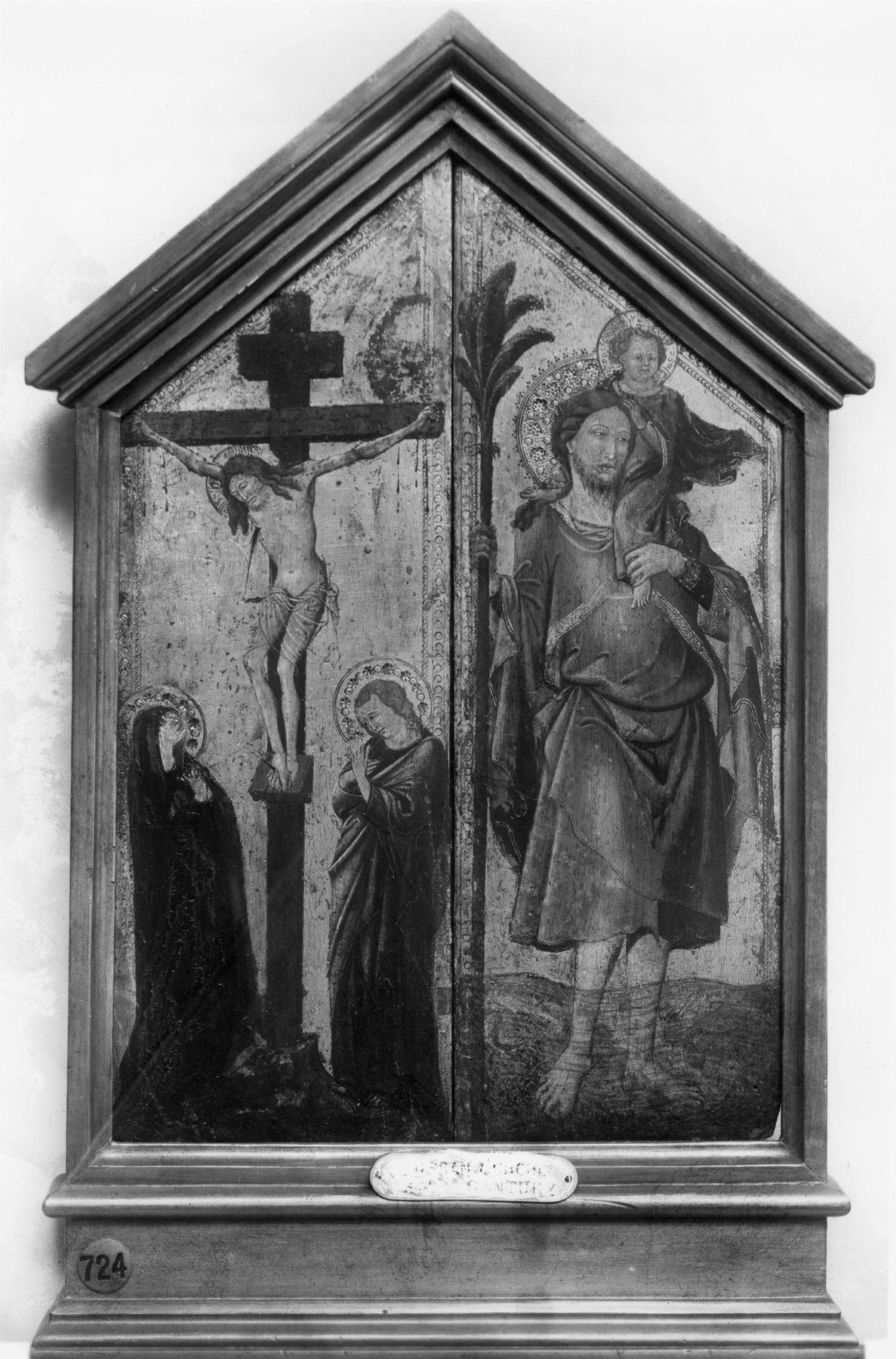The Crucifixion and Saint Christopher
(Medieval Europe )
These panels were the folding wings of a small triptych: paintings on three attached panels used for private devotion. An image of the Virgin and Child would probably have occupied the central panel.
One of the wings illustrates the most famous episode in the legendary St. Christopher's life, when he helped a child cross a river by carrying him on his shoulders: Christopher found the small child to be incredibly heavy, only to discover that he was, in fact, Jesus. The opposite panel shows the Crucifixion with the mourning Mary and John the Evangelist.
During the earlier part of the 14th century, Pisa nourished a rich, diverse artistic environment, where a unique painting style emerged out of the cross-influences from the schools of Siena and Florence.
Inscription
Provenance
Provenance (from the French provenir, 'to come from/forth') is the chronology of the ownership, custody, or location of a historical object. Learn more about provenance at the Walters.
Don Marcello Massarenti Collection, Rome [date and mode of acquisition unknown] [1897 catalogue: no. 28, 29, as Tuscan School, 14th century]; Henry Walters, Baltimore, 1902, by purchase; Walters Art Museum, 1931, by bequest.
Exhibitions
| 1962 | The International Style: The Arts in Europe Around 1400. The Walters Art Gallery, Baltimore. |
Geographies
Italy, Pisa (Place of Origin)
Measurements
Left wing painted surface H: 14 5/8 x W: 4 15/16 x D: 3/8 in. (37.1 x 12.5 x 1 cm); Right wing painted surface H: 14 13/16 x W: 5 5/16 x D: 3/8 in. (37.7 x 13.5 x 1 cm)
Credit Line
Acquired by Henry Walters with the Massarenti Collection, 1902
Location in Museum
Not on view
Accession Number
In libraries, galleries, museums, and archives, an accession number is a unique identifier assigned to each object in the collection.
In libraries, galleries, museums, and archives, an accession number is a unique identifier assigned to each object in the collection.
37.724


